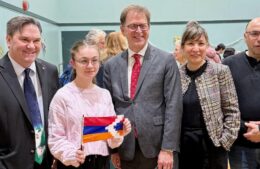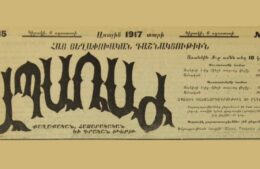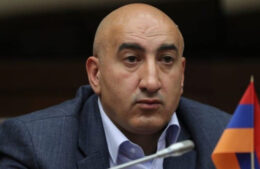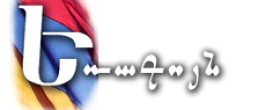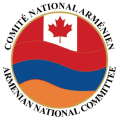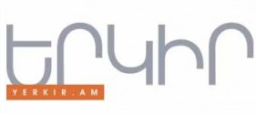“Tavush for the Homeland” calls for accountability for police violence
- (0)
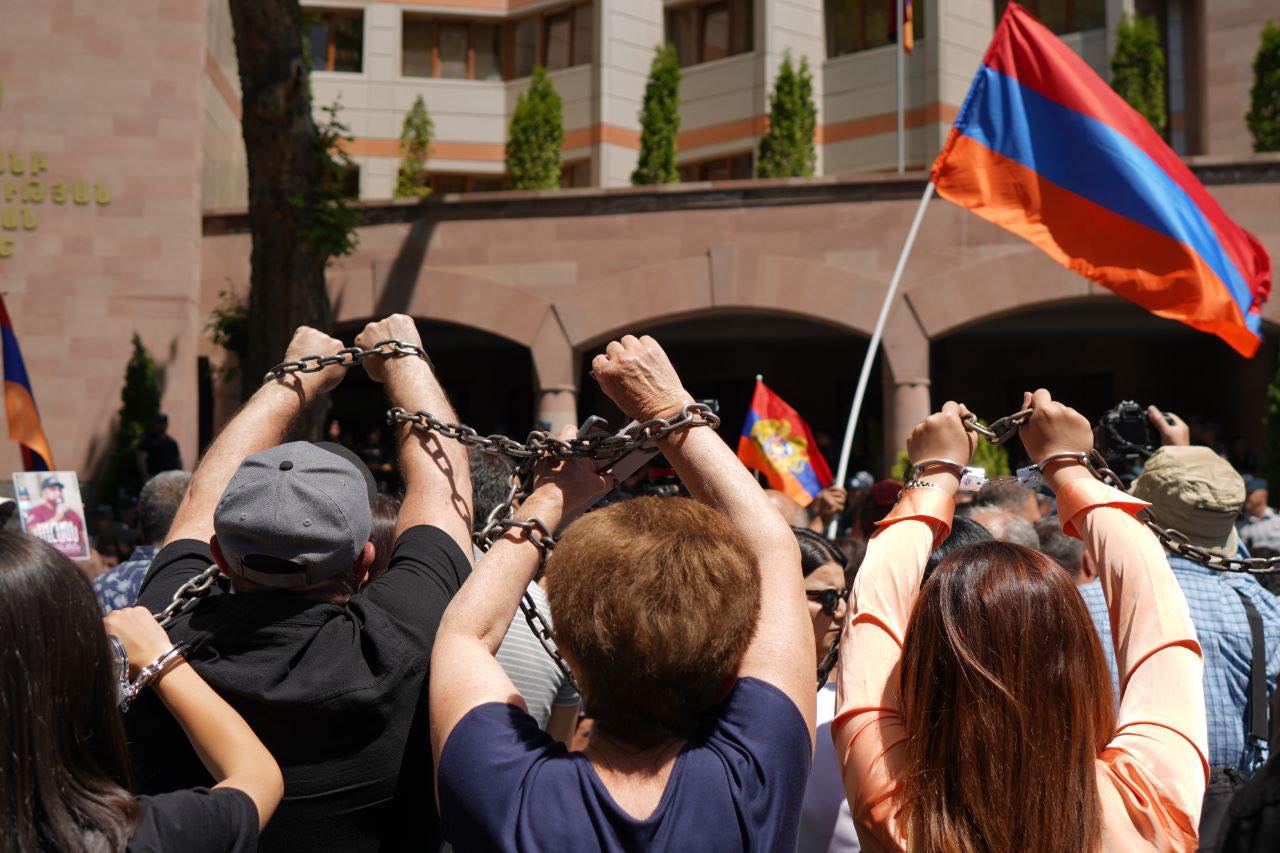
Hoory Minoyan
YEREVAN—As the “Tavush for the Homeland” movement continues to oppose what it sees as the Armenian government’s unilateral concessions to Azerbaijan, movement leader Archbishop Bagrat Galstanyan has articulated the functions of a proposed transitional government. This announcement comes ahead of a major rally set for Sunday, June 9, at 6:30 p.m. local time in Yerevan’s Republic Square.
During the daily wrap-up on June 4, which is held each evening after street protests in the yard of St. Anna’s Church in Yerevan, Archbishop Galstanyan highlighted the role of the temporary government. He said that the government will prioritize a comprehensive reconciliation agenda across all societal levels to foster unity and healing. Additionally, it will regulate international relations and assess the current geopolitical landscape to ensure Armenia maintains its course amidst global dynamics. It will also hold extraordinary elections within a predetermined period, with members of the interim government abstaining from participation.
Parallel to these developments, Armenia has responded to Azerbaijan’s latest proposals regarding the draft peace treaty with a revised ninth edition, the Press Secretary of Armenia’s Foreign Ministry Ani Badalyan shared on June 4. Following the receipt of Azerbaijan’s proposals at the end of April, the Armenian and Azerbaijani foreign ministers met on May 11 to discuss the draft.
Azerbaijani Foreign Minister Jeyhun Bayramov remarked on the progress, stating, “A few days ago, we received a new proposal for a peace treaty from Armenia. I should say that there is a reduction in the number of open questions. Positive progress is observed in a number of points. In other words, we see positive dynamics here.”
However, tensions remain. During a recent joint press conference with Hungarian Foreign Minister Péter Szijjártó, Bayramov criticized Armenian Foreign Minister Ararat Mirzoyan for drawing “unacceptable parallels” between the Constitutions of Azerbaijan and Armenia. Bayramov noted that Armenia’s Constitution and other legislative acts contain territorial claims to neighboring countries.
Azerbaijani President Ilham Aliyev demanded in January and again in April that Armenia remove the unification act, adopted by the legislative bodies of Soviet Armenia and the then Nagorno-Karabakh Autonomous Oblast, from its Constitution.
Mirzoyan recently stated that both Armenia and Azerbaijan perceive obstacles to peace within each other’s Constitutions, but amending these documents is not currently on the agenda for the negotiations. Mirzoyan has repeatedly told reporters that Azerbaijan is reluctant to recognize Armenia’s borders, impeding the negotiation process.
Over the past week, Archbishop Galstanyan, alongside participants of the “Tavush for the Homeland” movement, conducted a series of visits to key institutions to express their opposition to the Armenian government’s policies. The delegation visited government institutions including the Human Rights Defender’s Office, the Ministry of Foreign Affairs and the Government Building during an active government session.
At the Human Rights Defender’s Office on June 4, protesters demanded accountability for the use of brutal police force against demonstrators. They specifically questioned the office’s assessment of several incidents: the visible mark of a policeman’s shoe on a young man’s face, the attempt to obstruct the entrance of His Holiness Karekin II to the Sardarabad Memorial Complex on Republic Day and police violence against MP Ashot Simonyan. Protesters urged the Human Rights Defender to address these human rights violations more assertively.
During the protest, individuals covered their mouths with red tape, representing what they see as the suppression of their right to free expression and protest. This visual statement reflected concerns within the gathering about limitations on public discourse and the stifling of dissenting voices. Additionally, some participants used binoculars to survey the Human Rights Defender’s Office, symbolizing the office’s lack of advocacy and protection of civil liberties.
During their visit to the Investigative Committee, demonstrators called on the head of the committee to release 27 individuals who were detained with brute force during a protest held in front of the Ministry of Foreign Affairs on May 31. They called for upholding legal standards and ensuring the protection of citizens’ rights.
Participants expressed their dissatisfaction by staging a demonstration and symbolically chaining themselves together, in solidarity with those who were detained for a duration of 72 hours after the May 31 protest. Around 5:00 p.m. on June 3, it was confirmed that the 27 individuals were released.
Two additional protesters were detained on May 31 yet subsequently released due to injuries sustained during the confrontation, requiring immediate hospitalization. Eyewitnesses say that law enforcement resorted to excessive force while detaining protesters.
Amidst the chaotic scene, witnesses observed members of the red berets, a special forces unit, kick Archbishop Galstanyan several times, raising concerns regarding the level of police brutality.
These events followed a demonstration on May 30, during which citizens moved their vehicles into Republic Square, aiming to block all entrances and impede Prime Minister Nikol Pashinyan’s access to the government session scheduled for that morning.
Amidst a tense atmosphere, the rally in front of the government began with an unsettling incident involving a brief stampede by the police. Police proceeded to seize vehicles belonging to protestors, with reports indicating that one car was towed away to a designated storage area with individuals still inside it.
Archbishop Galstanyan addressed gathered journalists, expressing deep concern over the situation outside the government building. “The government premises have effectively been transformed into a detention center. The heavy-handed actions of law enforcement are alarming. What transgressions have we committed? Citizens have gathered peacefully, only to witness their vehicles being confiscated. This is an affront to our rights as citizens,” he said.
Moreover, a recent investigation into allegations made by Davit Levonyan, a journalist associated with the official “Civic” news agency, has debunked claims that Archbishop Galstanyan is a foreign agent and recipient of substantial funds from the Kremlin. Conducted by the National Security Service over the course of a thorough month-long examination, the investigation uncovered no incriminating evidence against the archbishop.
The Armenian General Prosecutor’s Office confirmed the lack of supporting data for the allegations against Archbishop Galstanyan. No criminal proceedings were initiated against Levonyan for perjury.
